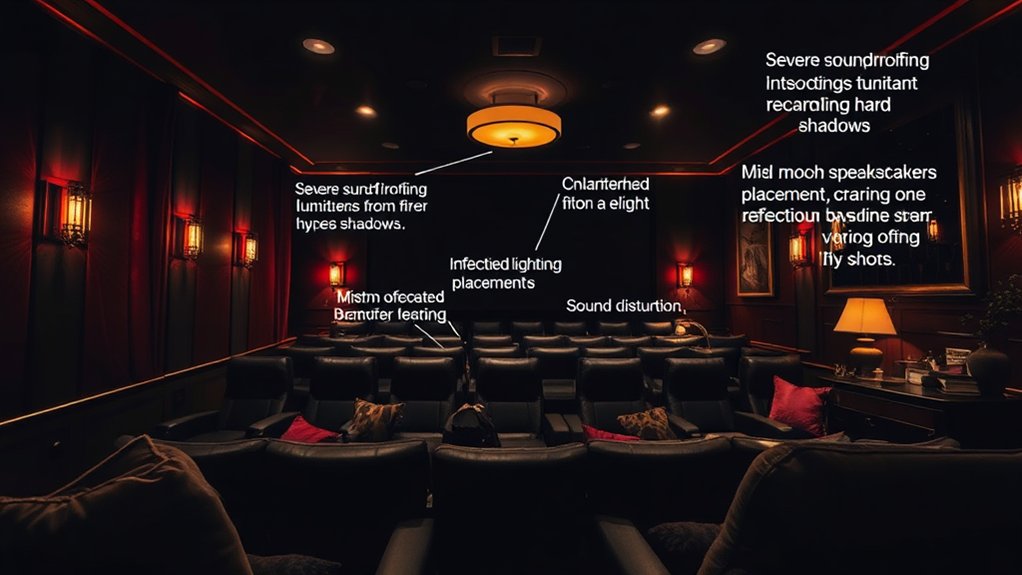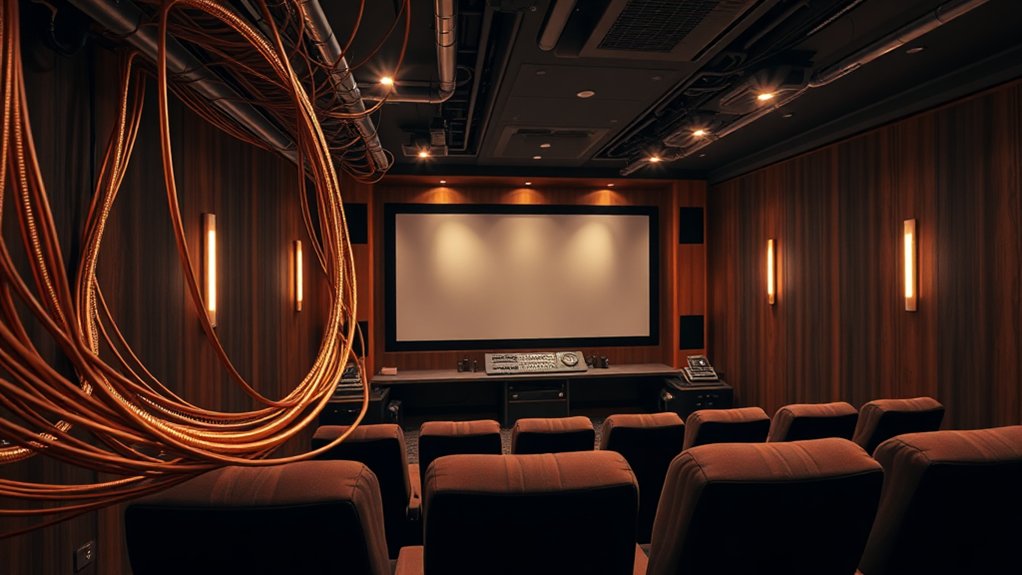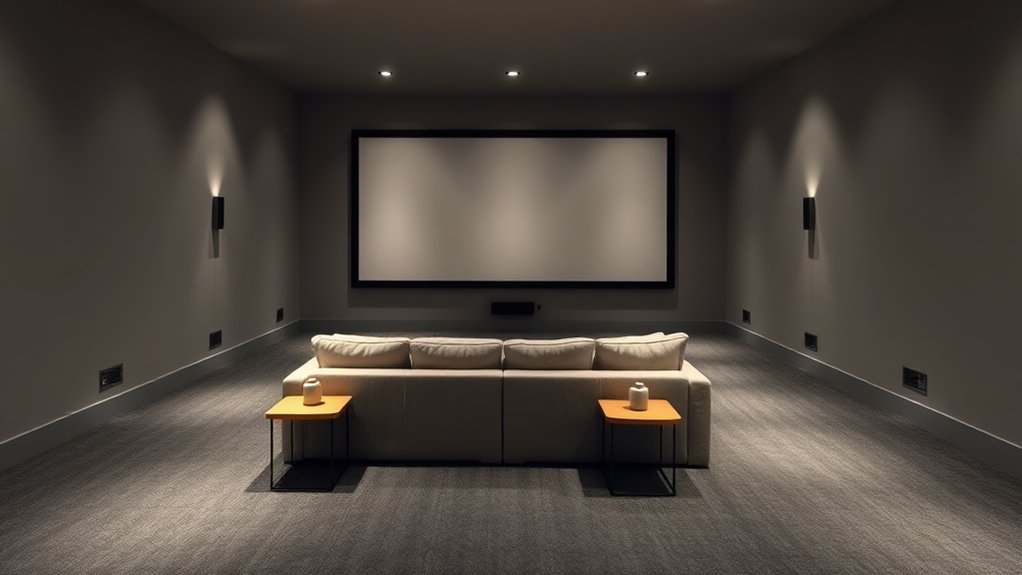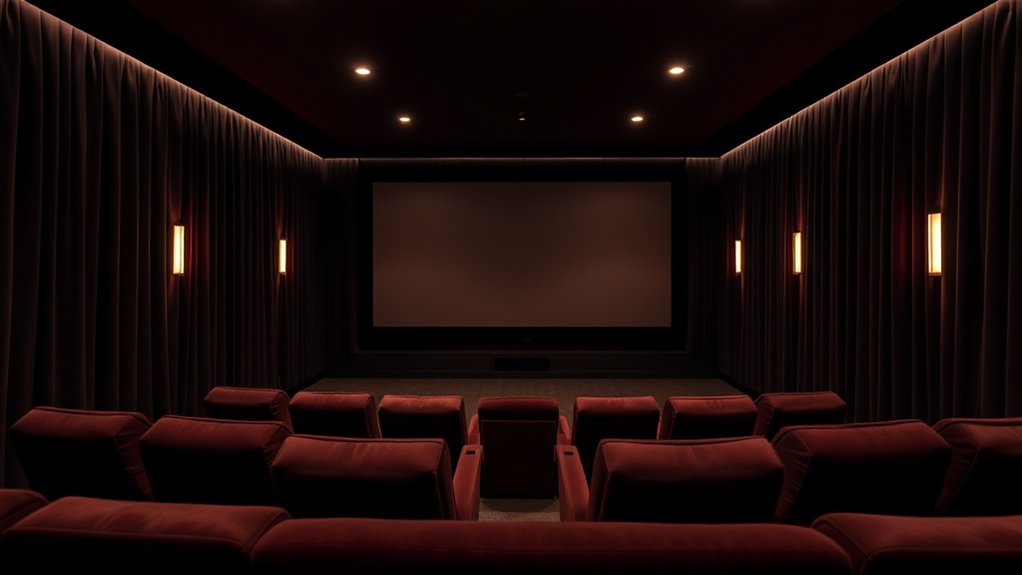When designing your theater room, you shouldn’t overlook the big mistakes that can ruin your experience. Inadequate room dimensions can create poor sound quality, whereas poor speaker placement might leave your audio lacking. Overcrowded seating can hinder comfort and obstruct views, and the wrong wall colors can mess with your picture quality. Finally, mixing non-theater activities can disrupt both acoustics and ambiance. Curious about how to avoid these pitfalls? There’s definitely more to investigate!
Key Highlights
- Ignoring room dimensions can create imbalanced acoustics, resulting in poor sound quality and an uncomfortable viewing experience.
- Improper speaker placement distorts audio; speakers should be at optimal angles and heights for clear sound delivery.
- Overcrowding seating arrangements leads to discomfort and obstructed views, hindering the overall enjoyment of the theater.
- Selecting inappropriate wall colors can negatively affect screen contrast and overall image quality, impacting viewing clarity.
- Mixing non-theater activities in the space can disrupt acoustics and clutter the environment, detracting from the intended ambiance.
Inadequate Room Dimensions and Shape
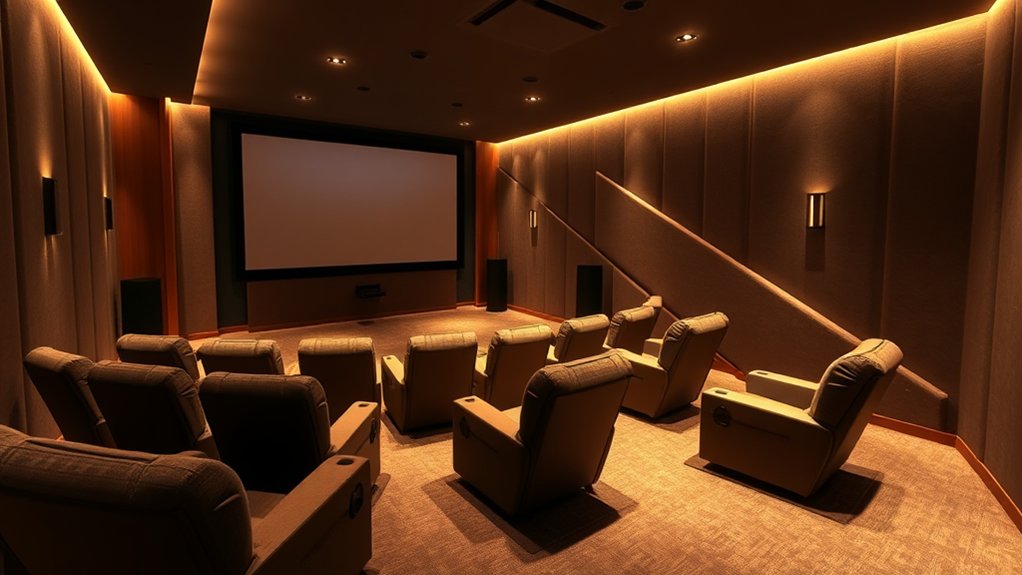
When you’re setting up your ideal theater room, you mightn’t realize just how essential the room’s dimensions and shape are until it’s too late.
You see, rectangular rooms are your best friends; they minimize those bothersome standing waves that distort sound clarity. Unlike square rooms, which can throw your audio into chaos, a ratio around 1.6:1 (the golden ratio, if you will) is ideal for keeping audio impressive. Additionally, ideal room dimensions ensure the proper proportions help distribute sound waves evenly throughout the space. Furthermore, considering room acoustics when designing your setup can help maximize audio quality and prevent common issues.
At the same time, small spaces invite excessive reverberation, whereas large rooms risk sound fading into the void. A comfortable setup, like 13 feet wide by 20 feet long, not only improves your viewing experience but guarantees immersive sound.
Poor Speaker Placement
One common pitfall in home theater design is poor speaker placement, which can drastically undermine your audio experience, regardless of the rest of your setup being of high quality.
When positioning your front speakers, aim for a 25-30 degree angle from your seating; otherwise, you might just get a muddled sound that resembles a distant conversation. Proper speaker placement enhances immersive audio technologies, so you can fully enjoy the depth and clarity of your audio experience.
Surround speakers? They should be 90-110 degrees off-axis, not waving hello from the corners! Proper placement is essential for an immersive audio experience, so be sure to take your time adjusting your speakers. Ensuring that speakers are at appropriate angles enhances sound wave behavior, leading to a clearer audio experience.
Surround speakers should sit 90-110 degrees off-axis, not just hanging out in the corners!
Height matters too—align the tweeters to your ear level, or you’ll end up straining to catch dialogue.
And don’t forget symmetry; unequal distances between speakers can leave you with a lopsided soundstage that sounds more like a bad sitcom than an epic movie.
Who wants that?
Excessive Seating Capacity and Arrangement
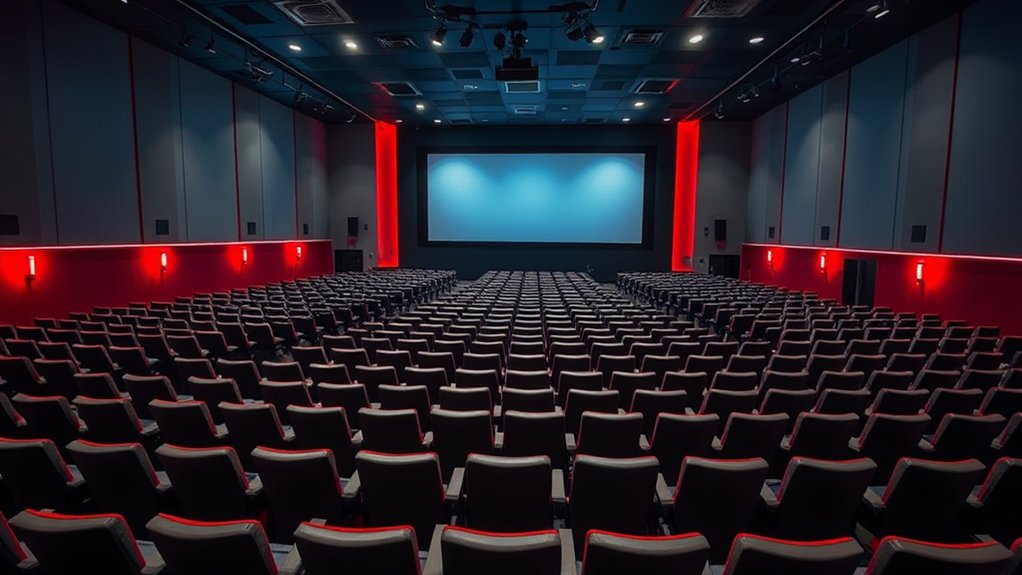
As the best speaker placement sets the stage for an immersive audio experience, the importance of seating capacity and arrangement can’t be overlooked.
You might be tempted to cram in as many seats as possible, but think twice—too many seats can make everyone uncomfortable. Overcrowded spaces lead to cramped legs, awkward angles, and obstructed views. Nobody wants to be that person straining their neck to see the action. Furthermore, ensuring that your seats are equipped with automatic seat lifts can enhance overall comfort and accessibility for patrons.
Plus, ignoring room size and safety regulations can turn your theater into a ticketing nightmare, potentially violating local codes.
Inappropriate Wall Colors and Surface Treatments
Choosing the right wall colors and surface treatments is crucial to crafting the perfect theater room—after all, you wouldn’t want to make decisions that turn your cinematic haven into a distracting eyesore.
Light colors, whereas appealing, can wreak havoc on screen contrast, reflecting unwanted light and diminishing your viewing experience. Instead, consider deep matte tones that absorb light and improve picture quality.
Light colors may look nice, but they can ruin your viewing experience—opt for deep matte tones to enhance picture quality.
Let’s not forget about glossy finishes, which can create glare that’s more offensive than a bad acting performance!
Plus, make certain your surfaces are smooth to maintain sound clarity; no one wants echoes competing with an epic film score.
Testing colors in real lighting can save you from surprises—after all, that bright red might just end up looking like a holiday decoration!
Overloading the Space With Non-Theater Activities
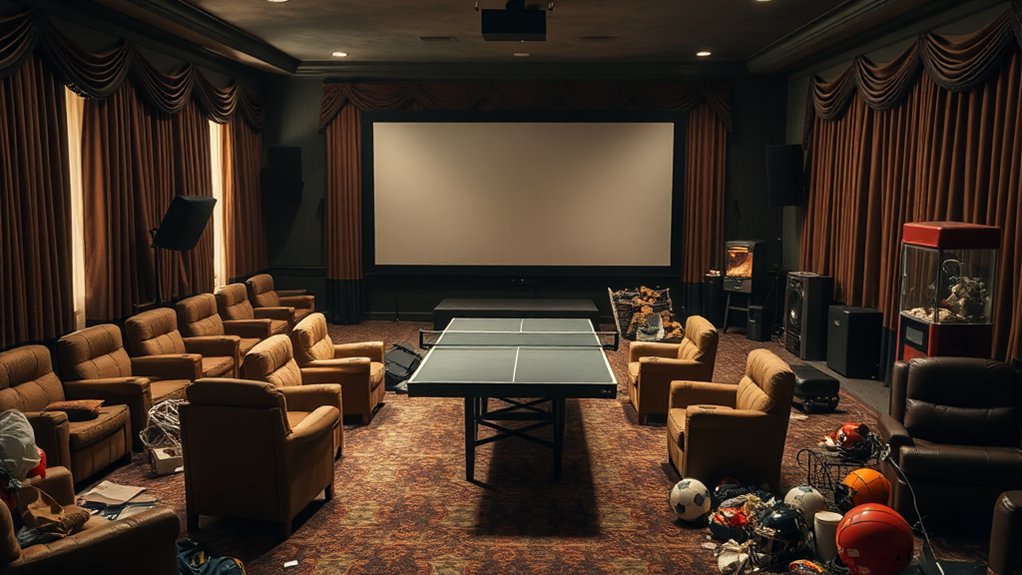
When you cram a theater room with non-theater activities, it’s like trying to host a blockbuster premiere as you juggle a game of charades—chaos often ensues.
You might think combining gaming or exercise would spice up your space, but introducing these activities compromises acoustic performance. The sound clarity you crave for movie dialogues gets muddled, as furniture disrupts speaker sound fields.
Ever tried to enjoy a film with awkward seating causing screen door effects?
Additionally, clutter limits crucial acoustic treatment, which amplifies sound reflections. Lighting becomes a casualty, too, leading to amateurish viewing experiences.
Frequently Asked Questions
How Do I Choose the Best Screen Size for My Room?
To choose the best screen size for your room, measure your viewing distance and multiply it by the appropriate factor for your preferred aspect ratio. Guarantee comfortable seating distance and consider room shape for ideal viewing angles.
What Type of Seating Is Best for Comfort and Viewing?
For comfort and viewing, you should opt for ergonomic reclining chairs with good legroom. Make certain your seating’s positioned within a 30-degree viewing angle, maintaining eye level with the screen for ideal immersion and enjoyment.
How Can I Improve Sound Quality Without Professional Help?
To improve sound quality without professional help, focus on room acoustics. Use bass traps, optimize speaker placement, and adjust your equalizer settings. Regularly reassess your setup to maintain the best audio experience possible.
What Are Effective Ways to Control Light During Movie Nights?
To control light during movie nights, use smart lighting systems, dimmers, and layered zones that adjust easily. Implement blackout curtains and shades to block external light, enhancing your immersive viewing experience effortlessly.
Can I Incorporate Technology Without Compromising the Space?
You can absolutely incorporate technology without compromising space. Opt for wireless solutions and built-in designs, and guarantee devices blend effortlessly into your theater. Smart controls can improve your experience as you maintain a clean, open atmosphere.

